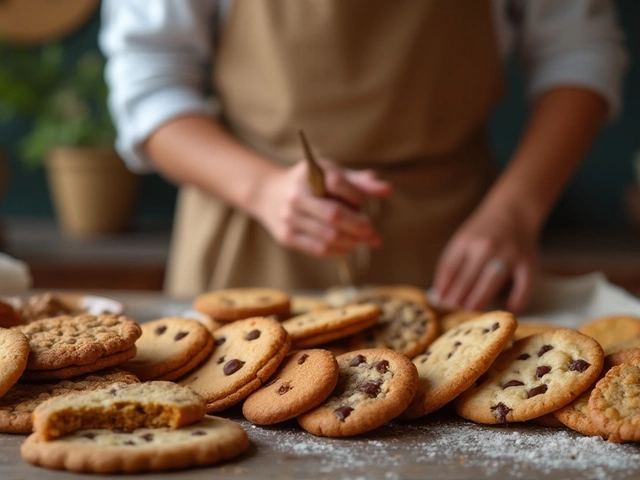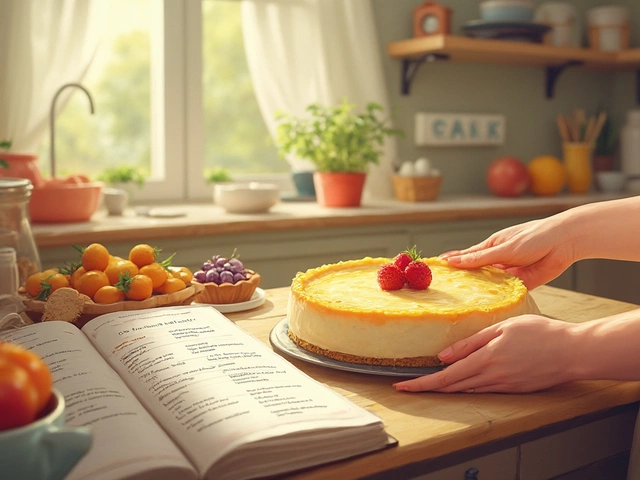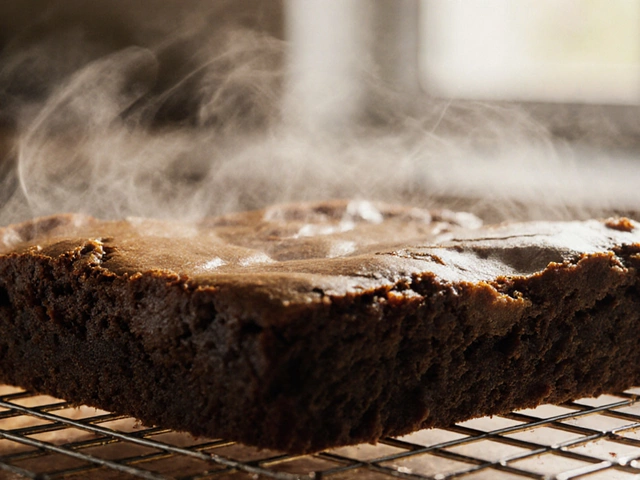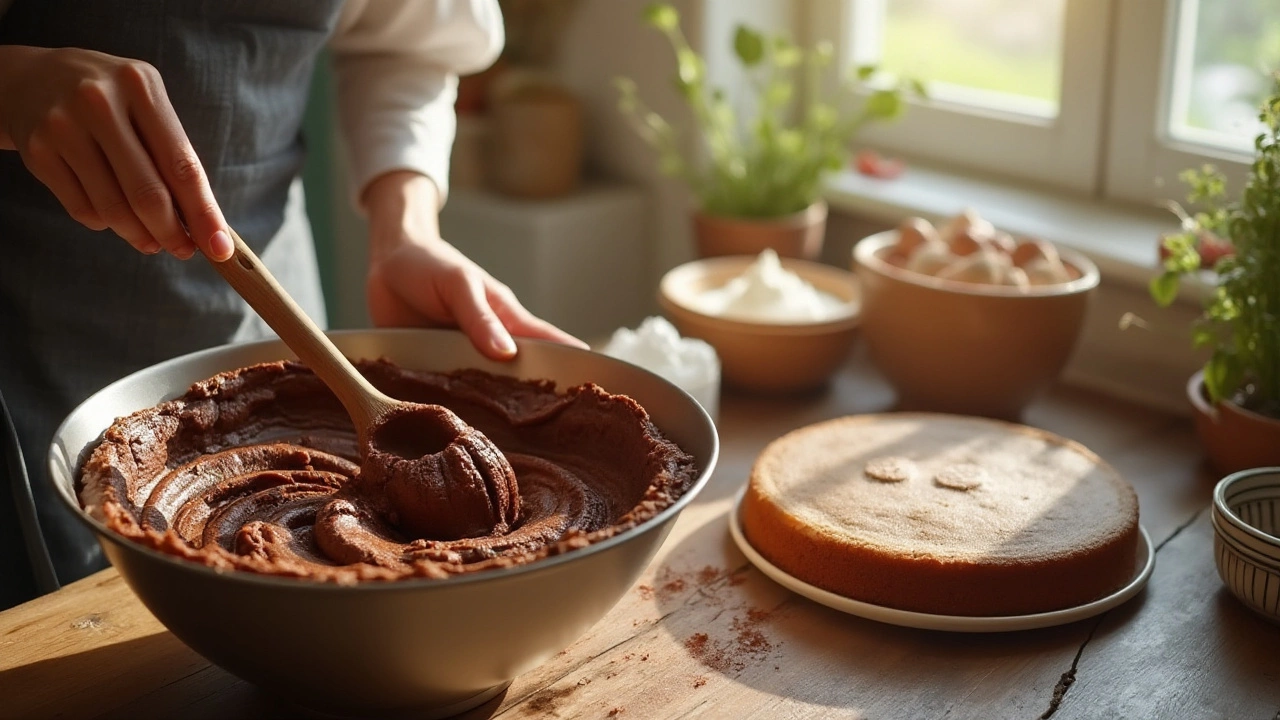
Many have pondered the tantalizing question: Is a brownie a cake, or does it deserve its own esteemed category in the dessert realm? At first glance, they seem quite similar—both emerge from the oven as warm, sweet confections that delight the senses. However, dive beneath the rich chocolate crust of brownies, and you’ll find a world of difference that sets them apart from their cakey counterparts.
Brownies boast a unique identity, grounded in a chewy, fudgy texture that a traditional cake could only dream of. Originating from the bustling kitchens of America, this treat owes its existence to happy accidents and creative experimentation. While traditional cakes rely on leavening agents for that classic, airy sponge, brownies lean into their dense, moist embrace. Understanding these nuances not only satisfies culinary curiosity but also enhances your baking endeavors.
Join us as we explore how these delicious squares of happiness hold their ground in the dessert hierarchy, learning how to perfect your own batch along the way.
- The Origins of Brownies
- Brownies vs. Cakes: Key Differences
- Mastering the Perfect Brownie
- Brownies in Popular Culture
The Origins of Brownies
The story of the beloved brownie begins with whispers of serendipity and secret ingredients from the late 19th century. As legend has it, the first brownie emerged from a happy accident—an inventive baker forgot to add baking powder to a chocolate cake batter, thus bringing into existence a fudgy treat. While the tale lacks concrete evidence, it aligns perfectly with the culinary spontaneity and ingenuity of the time. The brownie, with its dense, moist character and distinct chocolate flavor, soon won hearts across America.
Early brownie recipes appeared in print around the turn of the century, marking their rising popularity. The first known recipe was published in the 1897 Sears, Roebuck Catalog, though without chocolate. A pivotal moment came when Fannie Merritt Farmer adapted a recipe in her 1906 “Boston Cooking-School Cook Book,” enriching the batter with the cocoa flavor that defines them today. Brownies continued to evolve, weaving themselves into the fabric of American culinary history.
The roots of brownies are planted deeply in American soil, a testament to the melting pot of influences that characterize U.S. cuisine. As tradition went, these treats were not only quick to prepare and delightful but also adaptable to any pantry. This adaptability allowed recipes to vary extensively. Some prefer their brownies with nuts, others with extra mounds of chocolate chips or a hint of spice for warmth. The brownie, almost inadvertently, has become a canvas for the imaginative baker.
Brownies experienced a surge in popularity during the 20th century with the rise of baking at home. This trend was bolstered by the availability of pre-packaged mixes, which made it even simpler to enjoy a fresh batch without the fuss. Today, their simple yet indulgent nature makes them a staple dessert globally, reflecting both tradition and personal twists. It's interesting to note that in surveys by dessert enthusiasts, brownies frequently rank among the top favorite treats, attesting to their enduring charm and versatility.
The writer Alice B. Toklas famously included a recipe for hashish brownies in her 1954 cookbook. Though these brownies were more infamous than the classic version, they sparked curiosity worldwide and gave brownies a cultural edge. Toklas's avant-garde circles admired the boldness of incorporating such a twist, which pushed culinary boundaries and highlighted brownies as a versatile dessert capable of reinterpretation.
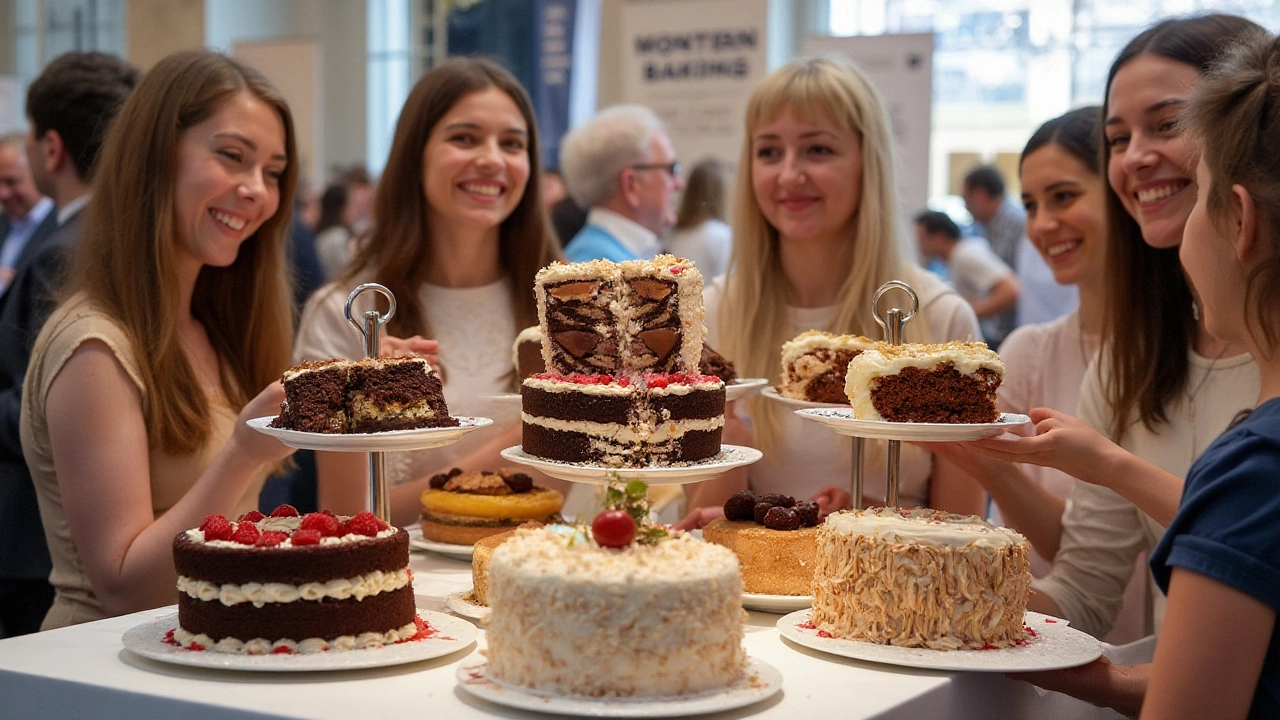
Brownies vs. Cakes: Key Differences
Dive into any cookbook, and you'll quickly discover that brownies and cakes might share common ingredients like flour, sugar, and eggs, yet their unique roles in the dessert world begin to diverge with their texture and density. The cakey question often sparks lively debate among bakers and dessert lovers alike. At its heart, a cake prides itself on its light, airy crumb, achieved through a delicate balance of flour to butter, assisted by raising agents like baking powder or baking soda. Brownies, on the flip side, embrace their dense, rich structure, a product of minimal or absent leaving agents, letting cocoa or chocolate take center stage. This stark difference in texture is perhaps the most telling: while cakes aim to soar with an airy loft, brownies luxuriate in their fudgy, almost chewy comfort.
The difference in preparation reveals notable contrasts as well. The sequence in which ingredients are introduced and mixed often distinguishes whether you end up savoring a cake slice or indulging in a brownie square. Cakes often rely on creaming butter and sugar to incorporate air—giving them that fluffy rise. Brownies, contrastingly, typically skip this step, sometimes with melted butter to emphasize their indulgent, chewy nature. The baking process extends the disparities further. Cakes demand precision both in mixing and oven temperature, often requiring a more delicate touch, while brownies tend to be more forgiving. They often bake at a slightly lower temperature to maintain that gooey, moist core that fans cherish.
Some might argue that the serving experience dramatically unravels the tale of these desserts. Cakes, often adorned with layers of frosting and elaborate decorations, tend to headline special occasions such as weddings and birthdays. Brownies, unadorned and unapologetically straightforward, cater to spontaneous cravings and are perfect companions at a cozy gathering. Though cakes have formal and ceremonial leanings, brownies represent an anything-goes approach to dessert, almost brazen in their bare-bones presentation. One fine distinction could even be indulgent freedom: while slicing a cake often requires utensils, brownies allow you to dive right in, grasping their deliciousness with bare hands.
In essence, while both sweets share the sweet tooth spotlight, their differences are a testament to the diversity of the baking domain. Some culinary historians suggest the best of both worlds when considering the versatility of brownies 'cake-like' variants, which incorporate more cake-like elements for additional fluffiness. The evolving range of both desserts’ styles ensures their timeless appeal, catering to evolving palates and preferences. According to food historian Linda Civitello, "Cakes are all about celebration, but a brownie is a cozy moment, inviting us back to enjoy simple, bold flavors without concern for appearance or decoration." Such distinct personalities keep these beloved desserts firmly planted at the heart of culinary discussions everywhere.
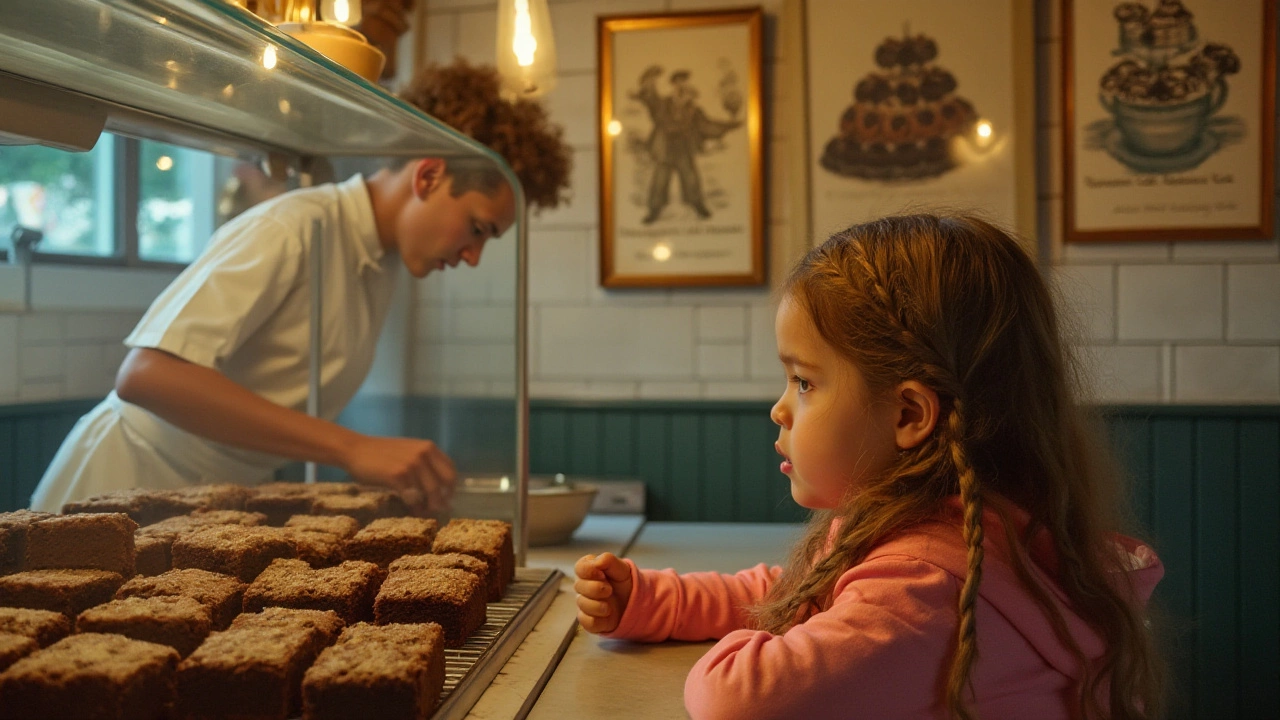
Mastering the Perfect Brownie
Creating the perfect brownie is a delightful endeavor that requires attention to detail and a love for the art of baking. Unlike making cakes, where precision often dictates the fluffiness of the final product, brownies offer a canvas for more creative leeway. The first secret lies in understanding the balance of moisture and texture. Too much flour can render your brownies cakey, something to avoid if you're aiming for that coveted fudgy center. Conversely, an ideal ratio of wet to dry ingredients results in a luscious, dense bite. It’s truly an art form that combines science with a spoonful of intuition.
It’s essential to start with high-quality chocolate, as it forms the flavor backbone of your brownies. Dark chocolate with at least 70% cocoa content provides a rich, deep taste that blends beautifully with butter and sugar. Melting chocolate and butter over a gentle simmer, known as a double boiler method, prevents burning—a mistake that even seasoned bakers can sometimes make. Whisk in sugar until the mixture reaches a glossy fudge-like sheen, as this step ensures a chewy crust, beloved by brownie purists.
The egg contribution is not to be underestimated. Eggs bind the mixture and add a luscious silkiness. Beating them well with sugar not only aerates the batter slightly but also locks in moisture. Salt, too, plays a crucial role, accentuating the flavors and cutting through the sweetness just enough to create a flavor balance that dances delightfully on your tongue. An optional splash of vanilla extract complements the cocoa notes, bringing harmony to the seemingly simple ingredients.
Add-ins and Variations
While traditional recipes are cherished, customizing your brownies can be a rewarding experience. Consider adding nuts for crunch or dried fruits for a chewy surprise. A dash of espresso powder intensifies the chocolate flavor without overpowering the subtle intricacies of each bite. Several bakers have found success swirling cream cheese or peanut butter into the batter before baking, creating marbled patterns that captivate both visually and gastronomically. As illustrated surprisingly often, the possibilities are nearly endless, allowing for creativity to shine through with each batch.
"The real magic of a brownie happens when science and love mix in perfect proportion," says world-renowned pastry chef Dominique Ansel. "It’s about understanding your ingredients' behavior and embracing slight imperfections—the crisp edge, the gooey center. That’s the beauty of home baking."
Temperature and Baking Time
The heat and duration of baking are pivotal in achieving the desired texture. Brownies are typically baked at a moderate temperature, around 350°F (175°C), ensuring the center cooks through while the edges develop a satisfying crust. Experimentation is key; not all ovens are created equal, and a slight variance in temperature can significantly alter your results. Keep a close eye on the timer, starting with the lower end of the suggested range. A skewer test can help gauge doneness; however, unlike cakes, a few moist crumbs should cling to the tester, confirming a perfectly baked batch.
Like any craft, the path to mastering brownies is paved with trials and triumphs. Each attempt teaches us more about the nuances of homemade desserts, inviting us back into the kitchen, again and again, to refine our touch. By embracing the rich history and adjusting techniques to personal preference, bakers can indeed create the perfect brownie, time after time.

Brownies in Popular Culture
Brownies have transcended their humble beginnings to become an iconic staple in popular culture, emblematic of comfort and indulgence. Their rich, fudgy texture and straightforward preparation have made them a favorite not just in home kitchens but also in literature, film, and even social movements. In literature, the brownie often appears in scenes depicting warmth and nostalgia, serving as a symbol of homey goodness and familial bonds. Beyond the pages of books, brownies often make cameo appearances in films and TV shows, underscoring moments of celebration or offering solace during times of heartache. They are often portrayed sitting warm and inviting on a kitchen counter, the very image evoking feelings of comfort and joy.
The role of this chocolatey treat extends into places one might not expect, influencing cultural settings and traditions. For example, in the United States, brownies are a common treat at bake sales, a classic fundraiser tactic embraced by schools and churches for decades. This has led to their association with grassroots fundraising and community spirit. The brownie became part of the culinary lexicon in the early 20th century, gaining popularity through cookbooks and women's magazines that highlighted them as a symbol of effortless but heavenly baking. The simplicity in making them, paired with limitless variations, has allowed them to flourish in myriad forms, from traditional recipes to avant-garde versions, adapting to various dietary preferences and trends.
In the realm of social gatherings, brownies play an unexpected yet pivotal role as a conversation starter at parties and gatherings. Their numerous iterations—ranging from blonde brownies to healthier, vegan alternatives—provide ample dialogue about personal preference and baking techniques. It's not uncommon to hear debates about the merits of a fudgy versus cake-like texture during social exchanges. On a different note, brownies have also carved a niche in the competitive baking world. Baking contests often feature these desserts, challenging bakers to display creativity while maintaining classic appeal.
An interesting aspect of the brownie’s cultural significance is its intersection with technology and social media. It has become a staple on platforms like Instagram and Pinterest, where vibrant images of perfectly square baked goods, sometimes adorned with intricate designs or unexpected ingredients, captivate food enthusiasts worldwide. Such digital portrayals have only bolstered the brownie’s status as a dessert of both tradition and trend. Moreover, the internet is rife with brownie hacks and tips, reflecting a collective, evolving attempt to perfect this beloved treat. It’s a testament to the impact social media has on culinary trends, pushing the boundaries of what a brownie can be.
The New York Times once noted, "The brownie, undisputedly, is a staple of the American kitchen, a testament to our love for simple yet delightful indulgences, adaptable enough to withstand the trials of taste evolution through generations."
With such a rich presence in popular culture, it’s no wonder that the brownie holds a special place in the hearts of dessert lovers everywhere. They have managed to cement their place as a dessert that is simultaneously traditional and trendy, comforting and contemporary. As society continues to evolve, so too will the beloved brownie, adapting and thriving in a world where culinary innovation knows no bounds. Whether as a simple indulgence or a blank canvas for creativity, the brownie stands as a testament to the enduring power of sweet simplicity.

